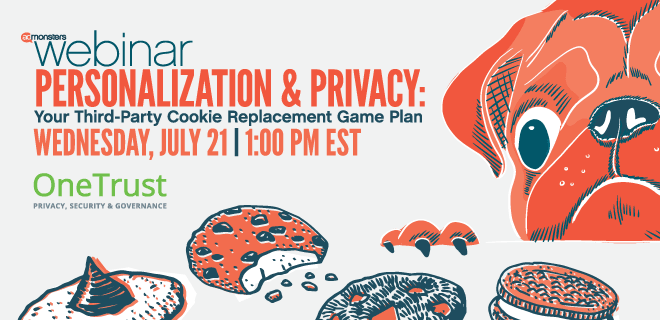
These are disruptive times. With consumers demanding more privacy, privacy regulations mounting, and big tech providers shutting down tracking, there are way too many hurdles for publishers to jump over today when it comes to knowing more about their audiences.
One bright spot: consumers are willing to buy from and share data with companies they feel are providing them with a clear benefit and protecting their privacy.
So how does that shape the future for publishers?
In a recent webinar, Personalization & Privacy: Your Third-Party Cookie Replacement Game Plan, Arshdeep Sood, Solutions Engineer, OneTrust, laid out a plan for the future, explaining why it’s important publishers have a CMP in place to adhere to regulatory guidelines, as well as why it’s important to start thinking about cross-device consent management now. (View the webinar on-demand below)
“The deprecation of third-party cookies in browsers does not mean you’re going to stop dropping cookies on your website,” Sood explained. “Those cookies can be used for different purposes that you would require consent for. It’s not the same as your stopping collection of any sort of data points, processing your data, analytical performance, or tracking. That means there is a need for a CMP or cookie banner where you can provide the right kind of disclosure, collect the right kind of consent, and then propagate it downstream.”
Solutions to 3P Cookie Deprecation:
- Integrate with walled gardens privacy feature sets — you’re really dependent on walled gardens here
- Integrate with ID solutions to target users based on digital identity — look for ones that allow you to personalize ads on your pages
- Capture reliable 1P data and build your own data set to target — this is the best approach to take so that you’re owning that first-party data point and leveraging it for personalization
“I’ve had conversations with marketers and there have been reports out there as well that say first-party data actually drives stronger ROIs for the campaigns they are looking to build,” reports Sood.
Leveraging First-Party Data in Place of 3P Cookies:
- Establish identifiers for understanding individuals and give them the value exchange
- Progressively profile visitors to understand what they like and don’t like
- Implement collection points to get the data from the consumer
- Activate the data to understand your users better
First-Party Data Use Cases & Benefits:
- Direct engagement
- Increased transparency
- Empower customers
- Improve customer insight
- Segment audience
- Personalization (content & products)
- Activate the data further
“We can ensure that our end users have a very transparent experience; exactly know what’s happening and understand the value we provide for them to give us consent to be identified,” Sood explained. “This empowers the consumer to own the experience on your page.”
Watch Personalization & Privacy: Your Third-Party Cookie Replacement Game Plan on-demand now!
Download the eBook What Comes After Third-Party Cookies? Everything Marketers, Publishers and Advertisers Need to Know